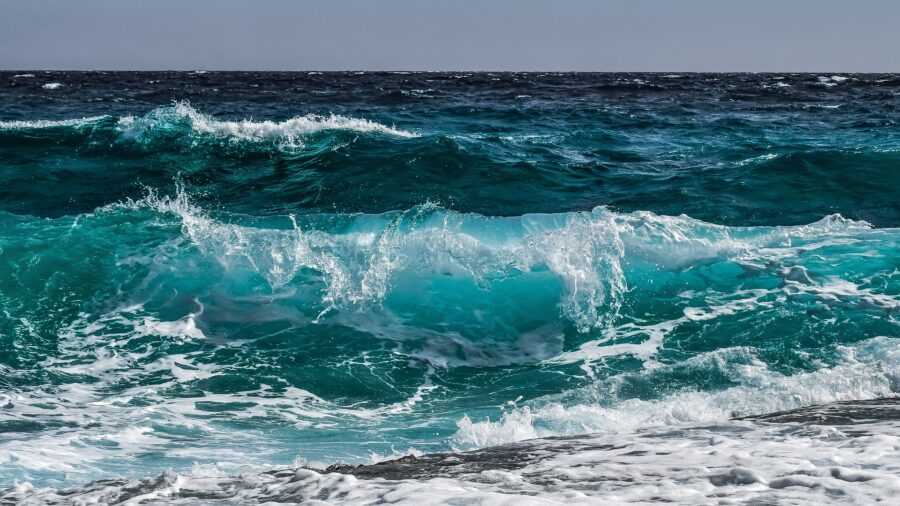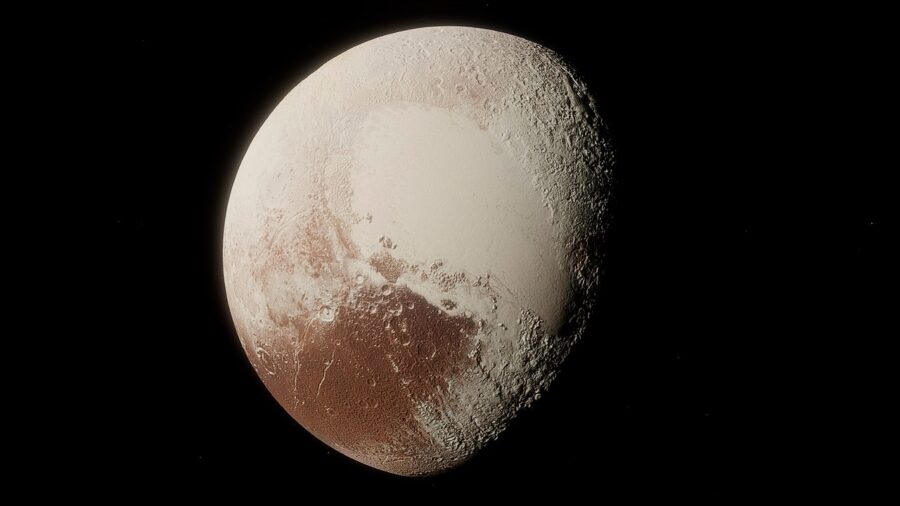Hidden Ocean Discovered In Our Solar System?

According to an exciting report from Space.com, new research into a strange crater along Pluto’s surface points to a possible subterranean ocean underneath the icy crust. Such an underground body of water would considerably and revolutionarily challenge our understanding of the distant celestial body.
New research suggests Pluto could be hiding a subterranean ocean.
The impetus for this discovery, a 44-km-wide Kiladze crater located northeast of a heart-shaped region of Pluto known as Sputnik Planitia, differs from typical impact craters. While the standard impact creaters include central peaks, Kiladze’s features imply a unique origin, potentially resulting from the eruption of a supervolcano. Moreover, this supervolcano seems to have spewed ice lava (as opposed to molten lava associated with Earth’s volcanoes) in a process called cryovolcanism.
Cryovolcanism is usually observed on moons orbiting the Solar System’s gas giants. In Pluto’s case, the evidence of an ice lava eruption excitingly suggests a hypothesized subsurface ocean, which would have provided the water/ice for the supervolcano to erupt in the first place.
In general, cryovolcanic activity significantly alters planetary surfaces over millions of years—mere minutes in the time span of the Universe, which is thought to be about 14 billion years old. Cryovolcanism also indicates vastly more complex internal heat mechanics on Pluto than previously thought.
The dwarf planet’s evolving landscape hints at an active, dynamic history uncharacteristic of what so many consider a lifeless world on the outermost fringe of our Solar System.
Scientist Dale Cruikshank from the University of Central Florida further articulated that what truly differentiates Kiladze is its composition. Methane and nitrogen layer most of Pluto’s surface, but the area surrounding Kiladze distinctly evidences water ice, implying an underground ocean.

Given Pluto’s axis tilt and climatic tendencies, scientists are surprised that water ice is still detectable at all. This is especially true given the dense layer of smog that would otherwise conceal, if not wholly hide, the water ice on Pluto’s surface.
Also, the scientific community is equal parts intrigued and perplexed by the heat source suggested by the relatively recent cryovolcanic activity. Such activity communicates at least the possibility of the dwarf planet harboring more interior heat than assumed.
Whether or not Pluto hides an underground ocean, it still should have cooled significantly since its formation almost four and a half billion years ago. As of now, the question of how and why the dwarf planet displays a heat source remains debated, with some scientists advancing the heat is due to radioactive decay in Pluto’s core.
Given Pluto’s axis tilt and climatic tendencies, scientists are surprised that water ice is still detectable at all.
Moreover, the dwarf planet’s evolving landscape hints at an active, dynamic history uncharacteristic of what so many consider a lifeless world on the outermost fringe of our Solar System. Indeed, the existence of a subsurface ocean—alongside the active geological activity—could radically reshape our understanding of that selfsame outermost fringe. If anything, this discovery emphasizes how the coldest, most distant reaches of the Solar System contain unexpected degrees of complexity and activity.
While these findings are nothing if not compelling, perhaps tempting many to envision Plutonian sea creatures straight from sci-fi, researchers like Cruikshank maintain that the complete picture of the dwarf planet’s internal processes remains elusive. Regardless, Pluto’s unexpected internal heat, evidence of cryovolcanism, and implied hidden ocean certainly open new, exciting realms of inquiry.











